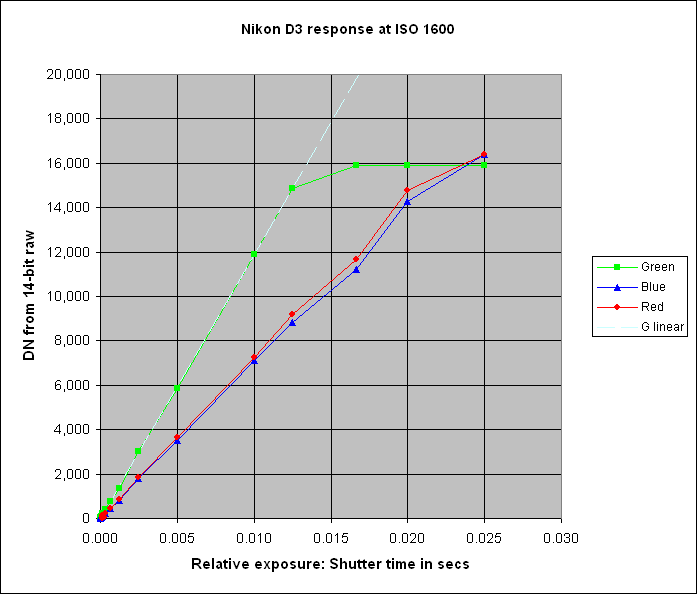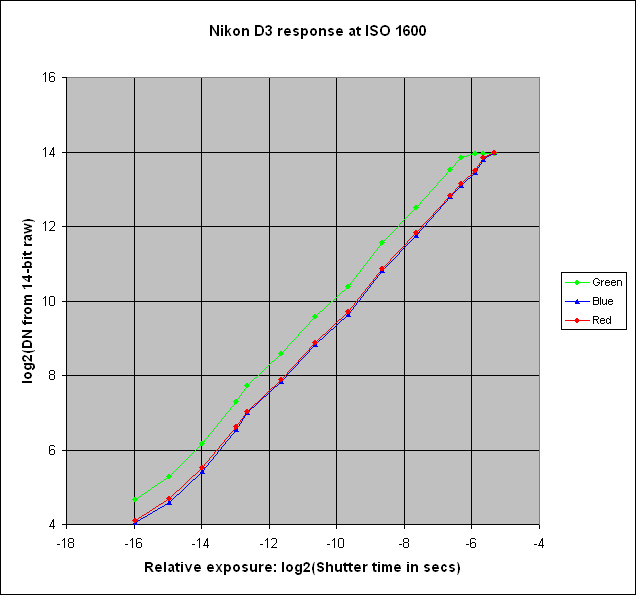See here.
The table below shows statistics of a 200 x 200 pixel area in the centre of each image for the green component.
Since it was necessary to change the aperture during the test, the "Shutter equiv" column converts the exposure time to its equivalent at the starting aperture of f/5.6
Whereas at ISO 200 the green limits at DN=15907 when the sensor wells are saturated, here at ISO 1600 the limit is not quite so precise. The top three exposures are in saturation and they show the same feature observed at ISO 200 that the Mean DN backs off slightly as more exposure is applied.
At the other extreme, when heavily underexposed, clipping begins four exposures from the bottom of the table.
These figures are plotted below:

The white dashed line shows a linear fit to the green curve for the 12 points having shutter times shorter than 0.016666 seconds (ie. avoiding the three saturated ones). The equation is: DN = 1187937.6 * Shutter Time and R² was 0.9999
The righthand column of the table above shows the extent to which the green curve departs from the white straight line. Ignoring the top three points (saturated) and the bottom point (mainly read noise), the linearity is pretty good, with a single point being 15% out.
The red and blue curves limit at a higher value (16,383) than the green one because these colour components are scaled so that they reach the maximum value that can be accommodated within the 14-bit raw file.
No significance should be attached to the fact that green reaches its maximum value at lower exposures than red and blue. That could be caused by the use of illumination that was not completely white.
On the above graph a lot of points are crowded at the origin. The next graph plots the same figures on logarithmic scales to avoid this:

The response is fairly linear over an exposure range of just less than 10 stops. Regarding any departure from linearity, it should be borne in mind that the measurements incorporate also any nonlinearity of the shutter and aperture mechanisms.
Peter Facey, Winchester, England
20080131 originated